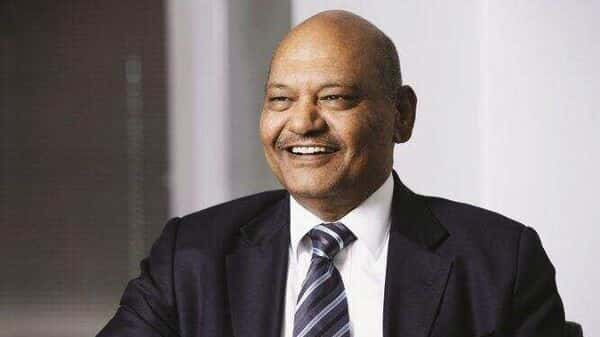The need of the hour is to work on Public-Private Partnership models and encourage private and non-profit organisations to make an initiative in the direction. As more and more private players shoulder the responsibility and establish cancer care centres in their regions, India would be able to reduce the cancer care gap
I aspire to live in a society where everybody lives cancer-free. A society where children don’t grow up without parents, loved ones are not lost, and lives are lived to the fullest. On World Cancer Day 2022 (WCD), we are still away from this becoming a reality. The National Cancer Registry Programme India reports that one in nine Indians may suffer from this life-threatening disease once in their lifetime. The report further stated that India was stipulated to have a massive 1,392,179 new cancer cases in 2020.
When we examine the availability of cancer diagnostics and care facilities in the country, we still need to do much more. Most of our cancer-related hospitals and healthcare facilities are limited and concentrated in tier-I cities. This, accompanied with general lack of cancer awareness, and high costs of cancer treatments, has led to the mortality to incidence ratio of cancer being much higher than high-income countries.
It is more important than ever to bridge the gap in cancer care, even during one of the most severe pandemics. While the limited availability of healthcare facilities was already a problem for cancer patients, the prevailing pandemic has further increased their woes.
Cancer prevalence in India
The National Cancer Registry Programme mentioned in its report that 94.1 men per one lakh males in India and 103.6 women per one lakh females would be affected by one or the other form of cancer. While there are more than 100 types of cancer, not all of them are lethal. However, mortality rates are high in India. While more than 1.3 million new patients are diagnosed with cancer, over 850,000 patients die of the disease annually in India. With cancer contributing to 8% of adult deaths, the mortality to incidence ratio for cancer is much higher in India than in high-income countries (HIC). While it is claimed that the excessive reporting of non-lethal cancers in HICs is a reason, several underlining factors add to the increased fatality. The lack of cancer awareness in the masses coupled with poor resource allocation, inadequate healthcare infrastructure, poor access to cancer care close to patients’ homes, and limited affordability of cancer treatments is the reason behind such high death rates.
Another reason behind the high mortality rate is the fear of treatment. It has been found that several patients are repulsive of the oncological treatment procedures related to cancer. While many fear the pain of chemotherapy, others have reservations about surgeries. Patients should fear the disease and not the treatment; they need to be made aware of the implications and how reducing them is possible with proper treatment.
Cancer is curable when detected early
While the saying- ‘better late than never’ might be true in other circumstances, it falls flat in the case of cancer prevention. Early detection is the cue to reduce fatality. Epidemiological studies suggest that 70 to 90% of all cancers are related to environmental factors. Lifestyle-related factors are most important. Cancer prevention is possible with the identification and amelioration of these causative factors. A study conducted to commemorate 50 years of cancer control programmes in India found that tobacco-associated cancer sites form 35 to 50% of all cancers in men and about 17% of cancers in women. The study also reported that these cancers are manageable through primary prevention, and controlling them is possible to a greater extent.
Revitalising the healthcare system in India
The healthcare system in the country needs to be revitalised with special focus on cancer care. It is crucial to improve the healthcare infrastructure at every level and establish regional cancer centres to ward off the increasing fatality rate. The Central Government’s decision to increase and establish several centres of AIIMS is commendable. While nine such centres are operational, 16 more institutes are under construction, and they would be operational soon. The establishment of such advanced medical institutions in the far and wide corners of the country is a step towards closing the care gap.
The need of the hour is to work on Public-Private Partnership models and encourage private and non-profit organisations to make an initiative in the direction. One such example is our non-profit care centre, Balco Medical Centre (BMC) in Raipur, Chhattisgarh, which runs in partnership with the government and caters to more than 1,01,008 outpatients, out of which, 60% of the beneficiaries are from below poverty being treated under various government schemes. It provides affordable cancer care to all by using high technology such as telehealth, personalised medicine, digitisation, and artificial intelligence and is one of a kind in Central India. We, at Vedanta, truly aspire for a cancer-free society, and are open to collaborative partnerships with healthcare providers to help take us there. As more and more private players shoulder the responsibility and establish cancer care centres in their regions, India would be able to reduce the cancer care gap.
Anil Agarwal, founder and chairman of Vedanta Resources Limited
Never miss a story! Stay connected and informed with Mint. Download our App Now!!
Log in to our website to save your bookmarks. It’ll just take a moment.
Oops! Looks like you have exceeded the limit to bookmark the image. Remove some to bookmark this image.
Your session has expired, please login again.
You are now subscribed to our newsletters. In case you can’t find any email from our side, please check the spam folder.
This is a subscriber only feature Subscribe Now to get daily updates on WhatsApp






